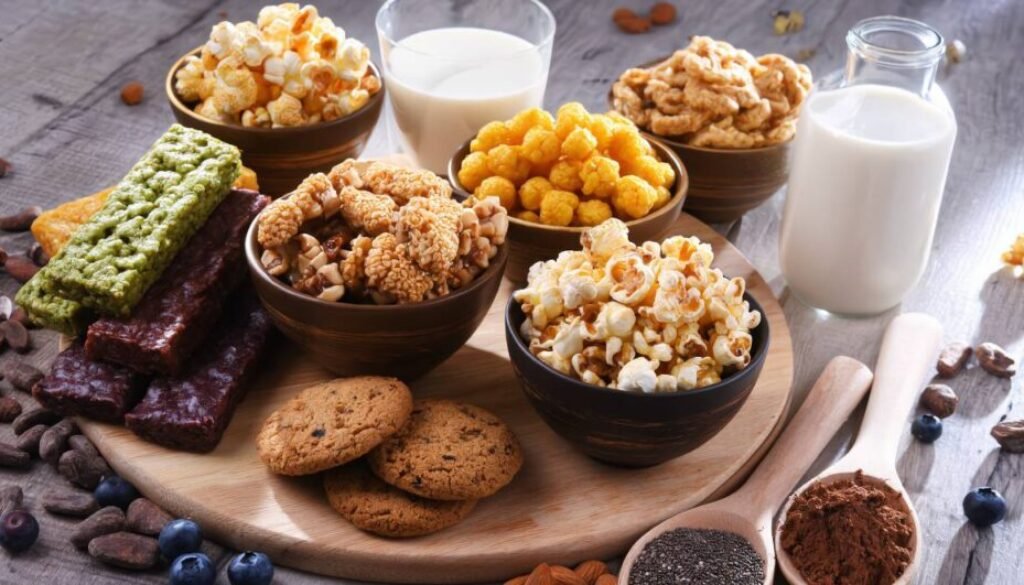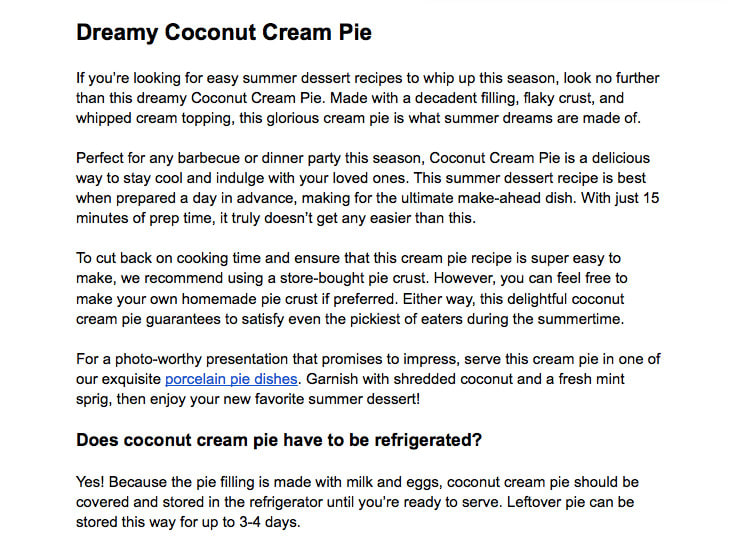Why Protein Snacks Took Over 2025: From Bars to Popcorn
In 2025, protein snacks have moved from gym bags to every corner of the supermarket. What started as fuel for athletes has transformed into a mainstream wellness habit, reshaping how we snack, shop, and even think about food. From crunchy chickpea puffs to creamy yogurt bars and mushroom‑infused jerky, today’s protein‑packed treats promise more than just muscle support—they deliver sustained energy, gut‑friendly benefits, and indulgent flavors that feel like a cheat day without the guilt. This new wave of snacking blends nutrition, convenience, and creativity, proving that eating well doesn’t have to mean eating boring.

Chapter 1: The Protein Snack Revolution in 2025
Why Protein Snacks Are Taking Over the Snack Aisle
In 2025, protein snacks are no longer a niche item for bodybuilders—they’re a mainstream lifestyle choice. Whether you’re a busy professional, a student on the go, or someone who simply wants healthier snacking options, protein-rich treats have found their way into lunchboxes, office drawers, and even coffee shop menus.
Brands have tapped into this demand by creating products that balance nutrition with indulgence. Instead of bland protein shakes, consumers can now grab chickpea crisps, mushroom jerky, or chocolate-covered protein cookies that taste just as good as their sugary counterparts. According to recent market research (source), the global protein snack market is expected to grow by over 8% annually, driven by health-conscious consumers and innovative flavor profiles.
How Protein Snacks Fit into Everyday Wellness
The appeal of protein snacks lies in their ability to provide quick, sustained energy without the blood sugar spikes caused by carb-heavy snacks. For example, pairing a protein bar with a piece of fruit can keep you full longer, making it easier to avoid unhealthy cravings.
If you’re looking to optimize your content around trending food topics like this, you can explore our Ultimate SEO Guide 2025 for tips on driving organic traffic.
Many of these snacks also come fortified with functional ingredients—from probiotics for gut health to adaptogens for stress support—turning them into more than just a quick bite. For an in-depth look at the science behind functional foods, check this nutrition research summary.
From Gyms to Grocery Stores—The Accessibility Boom
What’s fueling this boom is accessibility. Just a few years ago, protein products were confined to gym supplement shelves. Now, you can find protein popcorn, lentil crisps, and plant-based shakes in mainstream supermarkets, online grocery platforms, and even vending machines.
In fact, coffee chains like Starbucks have expanded their menus to include high-protein snack boxes and yogurt parfaits to cater to the wellness-driven crowd (read more).
If you’re inspired to write your own product-focused blog or review, consider working with professional food content writers—see our Fiverr expert guide for vetted freelance talent.
Pro Tip: When writing about protein snacks for your blog, integrate high-quality product photos, nutrition breakdowns, and personal taste tests to boost reader engagement. A visual storytelling approach can significantly improve shareability and click‑through rates, especially when paired with SEO‑friendly keywords like functional snacks, clean label protein, and plant‑based protein.
Thinking about launching a food blog or product review series around trends like protein snacks?
👉 This Fiverr writer specializes in food and drink content—and can help you get publish-ready articles fast.

Chapter 2: Why Protein Snacks Matter Beyond Bodybuilding
Protein Snacks as Everyday Energy Boosters
The image of protein snacks as only for gym enthusiasts is outdated. Today, they’re part of a balanced diet for office workers, students, parents, and even retirees. With modern life demanding constant focus and stamina, a high-protein snack can stabilize energy levels and improve concentration—without the crash you might get from sugary treats.
A 2025 consumer survey (source) found that 63% of people choose protein snacks not for muscle building, but for better daily wellness.
For bloggers or small businesses looking to ride this trend, learning how to optimize snack-related keywords for SEO is key—our Beginner to Pro SEO Guide has step-by-step strategies.
Balancing Taste and Nutrition
One of the biggest breakthroughs in the protein snacks industry is flavor innovation. Gone are the chalky, overly sweet bars of the early 2000s. Now you’ll find options like teriyaki-flavored mushroom jerky, matcha-infused protein cookies, and Mediterranean herb chickpea chips. These products satisfy cravings while delivering essential amino acids and micronutrients.
If you’re creating content in this space, check our guide on Article vs Blog Post to choose the best format for your snack reviews.
According to nutrition experts, the combination of protein with slow-digesting carbs and healthy fats can promote satiety and help maintain stable blood sugar levels—making protein snacks a smart choice for those managing appetite and energy.
Protein Snacks and Mental Wellness
There’s also a growing conversation about how protein snacks affect mood and mental performance. Foods rich in tryptophan and tyrosine—both found in certain protein sources—can support neurotransmitter production, potentially improving mood stability. Pairing protein snacks with hydration and short breaks during work can lead to higher productivity and reduced stress.
To explore similar workplace wellness trends, read our guide on best virtual assistant services and how delegating tasks frees up time for healthy habits.
Pro Tip: When reviewing or recommending protein snacks, link to credible nutritional studies or reputable health blogs (example) to increase your content’s trustworthiness. This also boosts your SEO authority through outbound links to high-quality domains.
Not all food writers know how to make nutrition sound fun.
👉 This freelancer blends food expertise with marketing sense—perfect for brands, blogs, and foodie newsletters.

Chapter 3: High‑Low Pairings – When Protein Snacks Meet Indulgence
The Art of High‑Low Pairings in Protein Snacks
One of the most exciting developments in 2025 is the rise of high‑low pairings—combining protein snacks with indulgent flavors or unexpected gourmet elements. Think dark chocolate‑dipped protein bars, spicy sriracha chickpea puffs, or truffle‑flavored protein crisps. This approach keeps healthy eating fun and exciting, encouraging more people to choose protein-rich options over empty-calorie treats.
For content creators, incorporating trending recipe mash‑ups can make your posts more shareable—see our Pinterest pin design guide for tips on making snack pairings go viral.
Global Flavor Inspiration for Protein Snacks
High‑low pairing is also fueled by global culinary influences. Brands are taking cues from Asian, Mediterranean, and Latin American cuisines to create adventurous flavor profiles. Examples include:
-
Matcha‑white chocolate protein cookies from Japan
-
Harissa‑spiced lentil crisps inspired by North African cuisine
-
Salted dulce de leche protein popcorn from Latin America
By introducing global flavors, brands cater to adventurous eaters while making protein snacks a social talking point. Food bloggers can leverage this by linking to cultural stories or travel‑inspired recipes—check out this culinary trends report for fresh ideas.
Balancing Indulgence Without Losing Nutrition
While indulgent flavors attract customers, the health benefits of protein snacks remain the core selling point. The best high‑low pairings keep sugar low, use natural flavorings, and retain a clean‑label ingredient list. For those starting food blogs, our beginner guide to website content strategy covers how to highlight both flavor and nutrition in your posts.
Some brands even collaborate with chefs or influencers to create limited‑edition flavors, turning protein snacks into seasonal, collectible products (source). This strategy drives urgency and brand loyalty.
Building a snack brand? Starting a health blog?
You don’t have to write every article yourself.
👉 Work with a pro food writer on Fiverr and keep your content fresh, fast, and factual.
Pro Tip: When writing about high‑low pairings, use descriptive language that evokes taste, texture, and aroma—then back it with nutritional facts. This keeps readers engaged while satisfying both the foodie and the health‑conscious audience.

Chapter 4: New Protein Snack Formats Changing the Game
Expanding the World of Protein Snacks
The 2025 snack aisle is almost unrecognizable compared to a decade ago. While protein snacks once meant little more than powdery shakes or bland bars, today’s market offers a vibrant variety designed to fit every lifestyle. From air‑popped protein popcorn to savory lentil crisps, brands are reinventing how protein is delivered—making it more fun, portable, and flavorful.
For bloggers looking to cover multiple formats in one article, check our article vs blog post guide to choose the best structure for your snack content.
Popcorn, Crisps, and Cookies with a Protein Twist
Popcorn infused with whey or pea protein is now a hot seller, offering a light, crunchy snack that also supports muscle recovery. Similarly, protein‑rich crisps made from chickpeas, lentils, or even quinoa are becoming everyday staples. Sweet lovers aren’t left out—protein cookies now feature clean‑label ingredients, minimal sugar, and even superfoods like cacao nibs and blueberries.
Want to know how to promote these products effectively? Our SEO content guide for 2025 explains how to target trending food keywords for maximum traffic.
Jerky and Meat Alternatives Evolving with Demand
Jerky isn’t just beef anymore. Today’s protein snacks include turkey jerky, salmon jerky, and plant‑based jerky made from mushrooms or soy protein. These options appeal to both meat eaters and flexitarians who want portable, high‑protein choices. According to market insights, plant‑based protein jerky sales are projected to grow by over 15% this year, signaling a major shift in consumer habits.
Ready‑to‑Drink and Hybrid Formats
The hybrid format trend blends protein with other functional benefits—think protein cold brew coffee, kombucha with added protein, or smoothie pouches with probiotics. These options fit perfectly into busy lifestyles, and their packaging is often Instagram‑worthy, making them popular with younger audiences.
If you’re launching a blog in this space, check our branding style guide tips to ensure your visual identity matches the freshness of the products you feature.
Google loves fresh food content—especially with trending keywords like “protein popcorn” and “healthy snacks 2025.”
👉 Hire this food blogger to help you turn trends into traffic.
Pro Tip: When covering new formats of protein snacks, include side‑by‑side comparisons, taste tests, and nutritional breakdowns. Pair your review with outbound links to credible nutrition sources (example) to build reader trust and improve SEO authority.

Chapter 5: Functional Ingredients Transforming Protein Snacks
Protein Snacks Enhanced by Functional Ingredients
One major reason behind the booming popularity of protein snacks is their fusion with functional ingredients—supplements or additives designed to boost specific health outcomes. In 2025, these snacks go beyond simple nutrition to offer targeted wellness benefits, from gut health to stress reduction. This has transformed the snack aisle into a place where consumers can conveniently address health concerns.
If you’re creating content about functional food trends, explore our guide on AI tools revolutionizing food marketing in 2025 to leverage tech-driven insights.
Gut Health and Protein Snacks: A Winning Combo
Gut health continues to dominate wellness conversations. Snacks like probiotic‑infused protein bars, prebiotic oatmeal cookies, and fiber‑enriched lentil crisps are in high demand. These products don’t just satisfy hunger—they support digestion, immunity, and overall well-being. Brands that successfully communicate these added benefits enjoy greater consumer trust.
To explore the latest scientific findings on probiotics and gut health, see this digestive health research summary.
Adaptogens and Stress‑Relieving Protein Snacks
Adaptogens, natural substances known for their stress-balancing properties, are another rising star in functional snacks. Ingredients like ashwagandha, reishi mushrooms, and holy basil are now featured in protein snacks, helping users manage stress and improve mental clarity. An example would be mushroom-infused protein bars promising calm energy throughout the day.
Considering a deep dive into wellness blogging? Our guide to building high-converting websites offers essential tips on engaging health-focused audiences.
Superfood-Enhanced Protein Snacks
Superfoods, rich in antioxidants and micronutrients, are also making their way into the protein snack aisle. Products featuring chia seeds, hemp, spirulina, or cacao nibs not only enhance nutritional profiles but also add distinctive textures and flavors that attract adventurous eaters. These snacks cater to consumers seeking holistic health benefits along with their protein boost.
For those looking to capture this audience, our content creation guide helps select the most effective content format for reviews, comparisons, and roundups.
Researching and writing every blog post takes time.
If you’re juggling multiple trends or niches, outsource your food content.
👉 This Fiverr writer delivers clean, concise food-focused content—so you can focus on growth.
Pro Tip: To effectively engage readers on protein snacks with functional ingredients, clearly explain the specific health benefits backed by scientific evidence. Additionally, offer practical usage tips, such as ideal consumption times and pairing suggestions, linking to reputable external resources (example here) to validate claims and enhance trust.
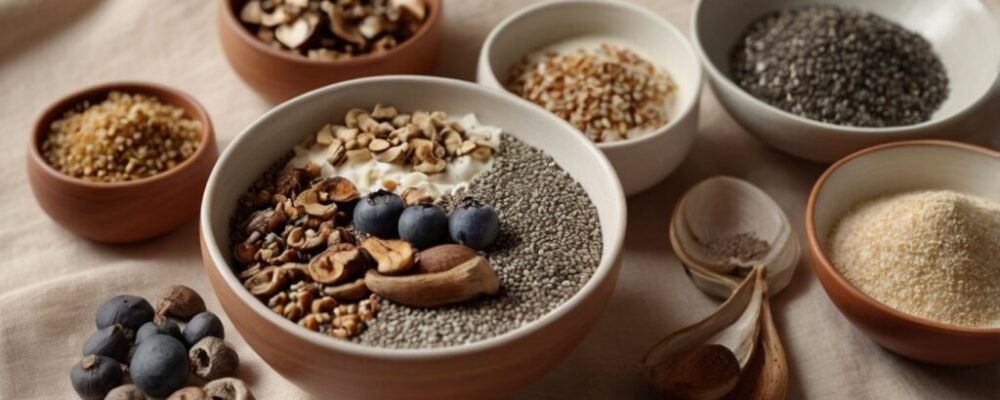
Chapter 6: Clean-Label Trends in Protein Snacks
Why Clean Labels Matter for Protein Snacks
In 2025, the consumer shift toward transparency is reshaping food packaging. “Clean-label” isn’t just a buzzword—it represents an expectation for clear ingredient lists, minimal processing, and sustainability. This trend significantly influences the popularity and trustworthiness of protein snacks, prompting brands to prioritize natural, straightforward formulations.
If you’re curious how clean labeling enhances customer loyalty, check our Ultimate Guide to High-Converting Websites for practical branding strategies.
Plant-Based and Minimalist Ingredient Lists
Today’s consumers carefully inspect labels, favoring protein snacks with short ingredient lists and recognizable names. Plant-based proteins like pea, chickpea, and hemp are thriving because they appeal to eco-conscious and health-driven shoppers. Products marked as “free-from” additives, artificial sweeteners, or preservatives resonate particularly well with this audience, reinforcing trust and repeat purchases.
For insights on trending plant-based ingredients, see this comprehensive market study.
The Rise of No-Sugar and Low-Carb Protein Snacks
Sugar reduction is another key factor driving clean-label popularity. Many modern protein snacks contain natural sweeteners like monk fruit or stevia, aligning with keto, paleo, or diabetic-friendly diets. Options such as sugar-free protein cookies, keto-friendly crisps, or lightly sweetened bars are dominating market shelves. For bloggers or reviewers looking to cover these snack trends effectively, our guide on Pinterest Pin Design offers actionable tips for generating clicks and traffic.
Eco-Friendly Packaging as Part of the Clean-Label Trend
Clean labeling isn’t limited to ingredients—it’s also about sustainable packaging. Today’s best-selling protein snacks come wrapped in recyclable or compostable materials, signaling eco-responsibility. Packaging clearly marked with sustainability certifications attracts environmentally-conscious buyers, boosting brand credibility. According to recent packaging innovation research, snacks with clear sustainability messaging sell 20% better than those without.
Protein snacks are booming—but so is competition.
If you’re launching a new product, you need articles that tell your story and connect with readers.
👉 Let this food writer help shape your brand through smart, on-trend content.
Pro Tip: When writing about clean-label protein snacks, always highlight ingredient simplicity, health claims, and sustainability clearly. Linking to credible eco-certifications and third-party nutritional analyses (example) can further strengthen your content’s credibility and SEO value.
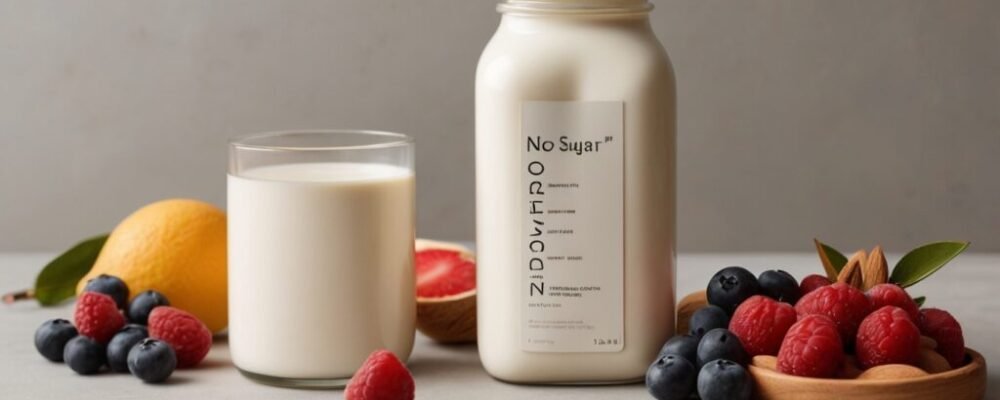
Chapter 7: Sustainability in Protein Snacks – Good for You, Good for the Planet
How Sustainability is Redefining Protein Snacks
In 2025, sustainability isn’t just nice to have—it’s a necessity. Consumers increasingly choose protein snacks not only for nutritional benefits but also for their positive environmental impact. Brands aligning with sustainable values see greater customer loyalty, market share, and reputation. Sustainable sourcing, responsible manufacturing, and eco-friendly packaging are no longer optional—they’re expected.
Explore deeper insights into sustainability branding by checking our Comprehensive Brand Style Guide.
Sustainable Ingredients: Upcycled Grains and Alternative Proteins
One significant sustainability trend involves using upcycled ingredients—grains, fruit peels, or seeds typically discarded during food production—to create nutritious protein snacks. Examples include protein bars made from brewer’s grains or crisps created from vegetable pulp. Additionally, alternative proteins like insect protein, algae, or sustainably farmed legumes provide novel, eco-friendly options. These ingredients reduce waste and environmental strain while offering health benefits.
If you’re interested in learning about innovative upcycled food brands, check this industry trend report.
Eco-Packaging Revolution in Protein Snacks
Packaging represents a major sustainability challenge. Modern protein snacks now often feature compostable wrappers, biodegradable materials, or recyclable paper packaging to reduce plastic pollution. Clear eco-labeling that highlights these sustainable materials resonates deeply with consumers, particularly younger demographics that prioritize climate-conscious consumption.
To get inspired by successful eco-packaging designs, see our article on crafting Pinterest-worthy visuals.
Balancing Animal and Plant Proteins Sustainably
While plant-based proteins have surged in popularity, responsibly sourced animal proteins also have a role in sustainability. Many brands now source meat-based ingredients from regenerative farms, sustainably raised animals, or fisheries adhering to strict environmental guidelines. Such practices attract consumers who prefer animal proteins but still value environmental responsibility. For example, salmon jerky and grass-fed beef bars are marketed as both nutritious and eco-conscious choices (learn more).
Let’s be honest—writing about popcorn with protein is fun, but not always easy.
👉 This Fiverr writer gets it—and can turn food facts into scroll-stopping reads.
Pro Tip: When highlighting sustainability in your protein snacks content, clearly communicate the tangible environmental benefits. Including authoritative external links and eco-certifications (example here) significantly strengthens your blog’s credibility and boosts organic SEO reach.
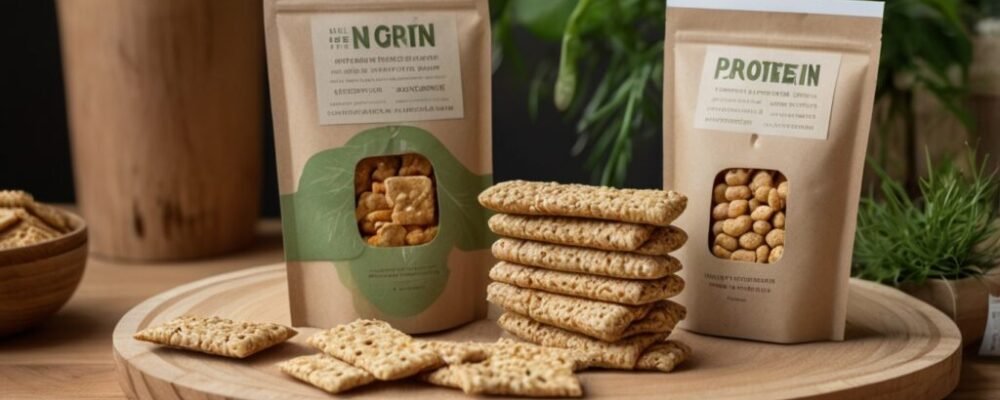
Chapter 8: Texture & Experience – The Sensory Appeal of Protein Snacks
How Texture Transforms Protein Snacks
In the crowded 2025 snack market, great taste alone isn’t enough—texture and sensory experience play a major role in consumer preference. Today’s best-selling protein snacks prioritize not just nutrition and flavor, but the joy and satisfaction derived from eating. A snack’s crunch, chewiness, or creaminess can turn a casual consumer into a devoted brand advocate.
To make your content visually appealing and clickable, check our guide on crafting Pinterest pins.
The Crunch Factor in Protein Snacks
Consumers consistently rank “crunch” as a desirable texture—associated with freshness and satisfaction. Brands are responding by creating protein-enhanced crunchy snacks, including lentil-based crisps, protein popcorn, and crunchy chickpea bites. These products not only deliver a satisfying bite but also promote mindful eating by extending the snacking experience.
For an in-depth exploration of why crunchiness matters psychologically, see this food psychology research.
Chewy Protein Snacks – Comfort and Convenience
Chewy protein snacks, such as soft-baked protein cookies, protein brownies, and jerky varieties, offer a comforting, indulgent mouthfeel. Chewy textures are associated with treats and desserts, appealing to snackers who want their nutritious choices to feel indulgent. Brands successfully leveraging chewy textures often use terms like “soft-baked” or “moist and chewy” prominently on packaging.
Want to dive deeper into consumer preferences for texture? Our guide to high-converting website content explains how to effectively communicate these sensory details online.
Creamy and Smooth Protein Snacks – The Drinkable and Spoonable Revolution
Drinkable and spoonable protein snacks, like smoothies, shakes, and yogurt, satisfy a growing demand for creamy, smooth textures. Products infused with superfoods, probiotics, or adaptogens not only taste good but provide functional health benefits. Protein-packed pudding cups, drinkable oats, or protein-rich nut butter packets exemplify this popular category. According to recent market trends, convenience-driven creamy snacks are set to grow by 25% by 2027.
Whether you’re running a blog, brand, or just starting to explore food content—writing matters.
👉 Partner with a pro who knows how to craft snackable content that informs, engages, and sells.
Pro Tip:
When reviewing protein snacks on your blog, vividly describe their sensory qualities. Words like “crispy,” “velvety,” “chewy,” or “airy” boost reader engagement. Pairing these descriptions with vivid images or short tasting videos—and linking to trusted texture and sensory research (example here)—will enhance your blog’s authenticity and increase its shareability.
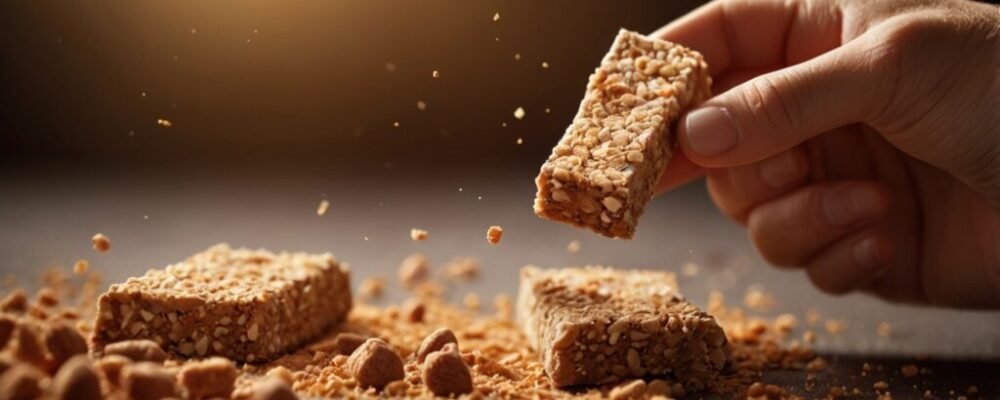
Chapter 9: How Brands and Starbucks are Reacting to Protein Snack Demand
Brands Leading the Protein Snack Revolution
As consumer appetite for protein snacks explodes, major food brands are racing to meet the demand with innovative products. Companies like KIND, Quest, and RXBAR have become household names, but even traditional snack brands—such as PepsiCo and General Mills—are shifting towards protein-enriched offerings. According to industry insights, companies that diversified their snack portfolios to include protein-rich products have experienced significantly higher growth rates.
For entrepreneurs or bloggers looking to break into this profitable niche, our Guide to E-commerce Development can provide strategies for successfully marketing protein snacks online.
Starbucks and the Mainstreaming of Protein Snacks
Perhaps no brand exemplifies the mainstream shift to protein snacks better than Starbucks. Recognizing growing consumer interest, Starbucks expanded its food menu to prominently feature high-protein snack boxes, egg-white bites, protein smoothies, and almond-butter bars. These new offerings have been hugely successful, especially among busy professionals seeking convenient, healthy snack options (read more here).
Starbucks’ strategy underscores the importance of accessibility—placing high-protein foods directly into daily routines, making healthier choices effortless.
Brand Collaborations and Influencer Impact
Another powerful force accelerating the popularity of protein snacks is influencer marketing and brand collaborations. Brands frequently partner with celebrities, fitness influencers, and wellness advocates to create limited-edition flavors or co-branded products. For instance, a popular fitness YouTuber recently launched a plant-based protein cookie line, driving massive social media buzz and consumer interest (full story).
Leveraging such influencer partnerships helps brands rapidly gain credibility and visibility, particularly among younger, health-conscious consumers. If you’re interested in influencer collaborations, our Social Media Video Guide explains how to effectively engage audiences through visual storytelling.
Pro Tip:
When creating content around brand and influencer partnerships in the protein snack space, use specific examples and case studies. Linking to notable brand stories (example here) will not only boost credibility but also strengthen SEO rankings by providing valuable external references.

Chapter 10: Risks of Overdoing Protein Obsession – Finding the Balance
Can You Have Too Many Protein Snacks?
While protein snacks offer clear nutritional benefits, moderation remains crucial. The wellness culture of 2025, fueled by social media trends, sometimes encourages excessive protein intake. Overconsumption can strain kidneys, cause digestive issues, and may lead to nutritional imbalances. Experts advise focusing on a balanced diet where protein snacks complement, not dominate, your daily nutrition (health insights here).
If you’re creating balanced wellness content, check out our Guide to Creating High-Converting Health Content to craft compelling, evidence-based posts.
The Potential Pitfalls of High-Protein Diets
One common pitfall of high-protein diets involves neglecting other essential nutrients like fiber, vitamins, and healthy fats. Exclusively relying on protein snacks might lead to deficiencies in fiber and micronutrients, causing symptoms such as fatigue, constipation, or weakened immunity. Balanced snacks, incorporating fiber-rich fruits, veggies, and whole grains alongside protein, ensure a well-rounded nutritional profile (nutrition research).
Psychological Aspects – Maintaining Joy in Eating
An excessive obsession with protein can also diminish the enjoyment of food. Snacking should remain pleasurable, not just functional. Constantly counting protein grams or calories might trigger stress or disordered eating behaviors. To maintain mental wellness, nutritionists suggest enjoying protein snacks mindfully, savoring flavors and textures without obsessive counting.
Our Guide to AI-Driven Social Media Content helps creators craft messages around balanced wellness and positive nutrition without promoting restrictive eating.
Achieving Balance with Protein Snacks
The key takeaway is moderation. Choosing diverse protein snacks alongside fresh, whole foods will provide optimal health benefits without risks. Rotate your snack choices weekly to avoid monotony and nutritional imbalances. Pair protein snacks with fresh fruits, veggies, nuts, or whole grains for broader nutrition (more ideas here).
Pro Tip:
When discussing potential risks or downsides of trending nutrition topics like protein snacks, clearly reference reputable health organizations or certified nutritionists (example here). This balanced approach enhances reader trust and authority, driving both engagement and SEO rankings.

Chapter 11: Conclusion – Why Protein Snacks Are Here to Stay
Conclusion: Why Protein Snacks Are Here to Stay
By 2025, protein snacks have transcended their gym-only origins to become an integral part of everyday wellness routines. Their appeal lies in the perfect trifecta of nutrition, convenience, and indulgence. Consumers now expect more than just protein counts—they demand clean labels, functional benefits, sustainable packaging, and memorable textures. As brands continue to innovate—merging superfoods, adaptogens, and eco-friendly practices into snack formats—the protein snack category shows no signs of slowing down.
Recent market forecasts predict the global protein snack market will exceed $40 billion by 2030, driven by ongoing product diversification and rising health awareness (source). For bloggers, this means ample opportunity to capture reader interest and affiliate revenue by covering emerging launches, taste tests, and sustainability stories.
How Your Blog Can Stand Out with Protein Snacks Content
-
Niche down on a subtrend: Focus on plant-based, adaptogen-infused, or upcycled-ingredient snacks.
-
Own the visuals: Use high-quality photos or short tasting videos to showcase textures—crunchy, chewy, creamy.
-
Leverage data and science: Cite credible studies (e.g., on gut health or adaptogens) using links like this digestive health research summary.
-
Optimize for SEO: Naturally weave your Focus keyphrase: protein snacks into H2s/H3s, meta tags, and alt text.
-
Include affiliate links and product roundups: Direct readers to popular snack boxes or bundles via your favorite ecommerce partners.
-
Engage with your audience: Encourage comments on flavor preferences or recipe ideas to boost social shares.
Want expert help executing these strategies? Check our Ultimate Guide to Hiring Fiverr Experts for vetted freelance writers, designers, and marketers.

🔟 Recommended Fiverr Experts for Protein Snack Content
1 Victoria M
I’m a passionate food writer specializing in crafting mouthwatering, SEO-friendly blog posts and engaging recipes. With expertise in culinary research, descriptive storytelling, and keyword optimization, I deliver flavorful, detailed content that delights readers and boosts traffic. Detail-oriented, creative, and deadline-driven, I elevate your food blog with professional, appetizing, consistent copy.

3 Anika S
I’m an adventurous travel writer specializing in compelling blog and website content that transports readers to new destinations. With expertise in SEO optimization, vivid storytelling, and local insights, I craft informative, engaging articles that inspire wanderlust. Detail-oriented and deadline-driven, I deliver authentic, well-researched travel narratives to elevate your online presence.

4 Hanna
I’m a professional Airbnb description writer with expertise in crafting compelling, conversion-driven listings. Skilled in highlighting unique property features and local attractions, I write engaging, SEO-optimized descriptions that attract more bookings and significantly boost revenue. Detail-oriented, creative, and market-savvy, I ensure each listing stands out and resonates with ideal guests.

5 Chris
I’m a seasoned content writer specializing in crafting killer SEO-optimized blog posts and articles that convert readers into customers. With expertise in keyword research, engaging storytelling, and on-page optimization, I deliver high-impact content tailored to your brand voice. Deadline-driven, detail-oriented, and focused on driving measurable growth through strategic content marketing.

6 Amber Dean
I’m a professional ghostwriter specializing in crafting high-quality blog posts and articles. With expertise in SEO, research, and engaging storytelling, I deliver compelling content tailored to your audience. Experienced, deadline-driven, and discreet, I ensure quality, collaborate closely to produce original, impactful copy that elevates your thought leadership and drives engagement.



7 Ahsan Seo
I’m a skilled SEO content writer specializing in crafting optimized articles and blog posts. With expertise in keyword research, on-page SEO, and engaging storytelling, I deliver tailored, reader-friendly content that boosts rankings and drives organic traffic. Detail-oriented, deadline-driven, and research-focused, I ensure high-quality, impactful copy that supports your brand’s growth.
8 Daniella H
I’m a passionate SEO food blog and nutrition article writer with expertise in crafting engaging, research-driven content. With deep knowledge of culinary trends and dietary science, I optimize articles for search visibility and reader appeal. Detail-oriented and deadline-focused, I deliver high-quality, informative posts that drive traffic, engagement, and brand authority.

9 Sadia Ali
I’m a passionate food writer specializing in crafting mouthwatering, SEO-friendly blog posts and engaging recipes. With expertise in culinary research, descriptive storytelling, and keyword optimization, I deliver flavorful, detailed content that delights readers and boosts traffic. Detail-oriented, creative, and deadline-driven, I elevate your food blog with professional, appetizing, consistent copy.

10 Tahira
I’m a creative content writer specializing in culture, art, and travel blogs. With expertise in storytelling and SEO, I deliver engaging, research-driven articles that immerse readers in local culture and artistic insights. Detail-oriented, deadline-focused, and adaptable to diverse niches, I craft narratives that boost engagement and elevate your brand’s voice.

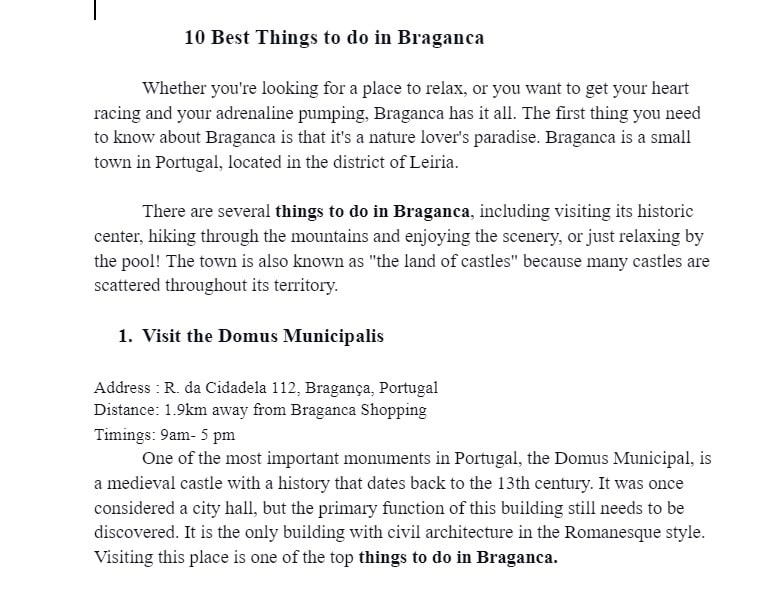
Please log in to access your exclusive content.
Don’t have an account? Click the “Register” button below to sign up.
